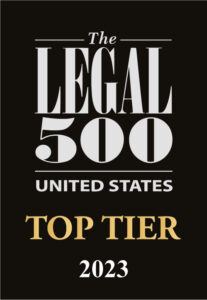Check out our summary of significant Internal Revenue Service (IRS) guidance and relevant tax matters for the week of December 23, 2024 – December 27, 2024.
December 23, 2024: The IRS released Internal Revenue Bulletin 2024-52, which includes the following:
- Treasury Decision 10015: These final regulations update the previous regulations under Section 48 of the Internal Revenue Code (Code), which provides for an investment tax credit for energy property (energy credit), and respond to changes made by the Inflation Reduction Act of 2022 (IRA).
- The final regulations update the types of energy property eligible for the energy credit, including additional types of energy property added by the IRA; clarify the application of new credit transfer rules to recapture because of failure to satisfy the prevailing wage requirements, including notification requirements for eligible taxpayers; and include qualified interconnection costs in the basis of certain lower-output energy properties.
- The final regulations also provide rules generally applicable to energy property, such as rules regarding functionally interdependent components, property that is an integral part of an energy property, application of the “80/20 rule” to retrofitted energy property, dual use property, ownership of components of an energy property, energy property that may be eligible for multiple federal income tax credits, and the election to treat qualified facilities eligible for the renewable electricity production credit under Code Section 45 as property eligible for the energy credit.
- Notice 2024-82, which sets forth the 2024 Required Amendments List. The list applies to both individually designed plans under Code Section 401(a) and individually designed plans that satisfy the requirements of Code Section 403(b).
- Notice 2024-86, which announces the extension of certain timeframes under the Employee Retirement Income Security Act of 1974 and the Code for group health plans; disability and other welfare plans; pension plans; and participants, beneficiaries, qualified beneficiaries, and claimants of these plans affected by Hurricane Helene, Tropical Storm Helene, or Hurricane Milton.
- Revenue Procedure 2024-42, which updates the list of jurisdictions with which the United States has in effect a relevant information exchange agreement or an automatic exchange relationship under Treasury Regulation §§ 1.6049-4(b)(5) and 1.6049-8(a).
- Announcement 2024-42, which provides a copy of the competent authority arrangement entered into by the competent authorities of the US and the Kingdom of Norway under paragraph 2 of Article 27 (Mutual Agreement Procedure) of the Convention between the US and Norway for the Avoidance of Double Taxation and the Prevention of Fiscal Evasion with respect to Taxes on Income and Property, signed on December 3, 1971.
- The IRS issued a notice of proposed rulemaking, setting forth proposed regulations related to the definition of “qualified nonpersonal use vehicles.” Qualified nonpersonal use vehicles are excepted from the substantiation requirements that apply to certain listed property. The proposed regulations add unmarked vehicles used by firefighters or members of a rescue squad or ambulance crew as a new [...]
Continue Reading
read more

 Subscribe
Subscribe




